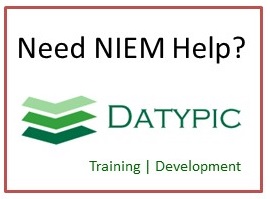gml:TopoSolidType
Complex type information
Namespace: http://www.opengis.net/gml/3.2
Schema document: external/ogc/gml/3.2.1/topology.xsd
Content
- Sequence [1..1]
- gml:metaDataProperty [0..*]
- gml:description [0..1]The value of this property is a text description of the object. gml:description uses gml:StringOrRefType as its content model, so it may contain a simple text string content, or carry a reference to an external description. The use of gml:description to reference an external description has been deprecated and replaced by the gml:descriptionReference property.
- gml:descriptionReference [0..1]The value of this property is a remote text description of the object. The xlink:href attribute of the gml:descriptionReference property references the external description.
- gml:identifier [0..1]Often, a special identifier is assigned to an object by the maintaining authority with the intention that it is used in references to the object For such cases, the codeSpace shall be provided. That identifier is usually unique either globally or within an application domain. gml:identifier is a pre-defined property for such identifiers.
- gml:name [0..*]The gml:name property provides a label or identifier for the object, commonly a descriptive name. An object may have several names, typically assigned by different authorities. gml:name uses the gml:CodeType content model. The authority for a name is indicated by the value of its (optional) codeSpace attribute. The name may or may not be unique, as determined by the rules of the organization responsible for the codeSpace. In common usage there will be one name per authority, so a processing application may select the name from its preferred codeSpace.
- gml:isolated [0..*]
- gml:directedFace [1..*]The gml:directedFace property element describes the boundary of topology solids, in the coBoundary of topology edges and is used in the support of surface features via the gml:TopoSurface expression, see below. The orientation attribute of type gml:SignType expresses the sense in which the included face is used i.e. inward or outward with respect to the surface normal in any geometric realisation.
- gml:solidProperty [0..1]This property element either references a solid via the XLink-attributes or contains the solid element. solidProperty is the predefined property which may be used by GML Application Schemas whenever a GML feature has a property with a value that is substitutable for AbstractSolid.
from type gml:AbstractGMLTypefrom group gml:StandardObjectProperties
Attributes
| Name | Occ | Type | Description | Notes |
|---|---|---|---|---|
| gml:id | [1..1] | xsd:ID | The attribute gml:id supports provision of a handle for the XML element representing a GML Object. Its use is mandatory for all GML objects. It is of XML type ID, so is constrained to be unique in the XML document within which it occurs. | from type gml:AbstractGMLType |
| aggregationType | [0..1] | gml:AggregationType | from group gml:AggregationAttributeGroup | |
| universal | [0..1] | xsd:boolean | A gml:TopoSolid must indicate whether it is a universal topo-solid or not, to ensure a lossless topology representation as defined by Kuijpers, et. al. (see OGC 05-102 Topology IPR). The optional universal attribute of type boolean is used to indicate this and the default is fault. NOTE The universal topo-solid is normally not part of any feature, and is used to represent the unbounded portion of the data set. Its interior boundary (it has no exterior boundary) would normally be considered the exterior boundary of the data set. | Default value is "false". |
Used by
- Element gml:TopoSolid



